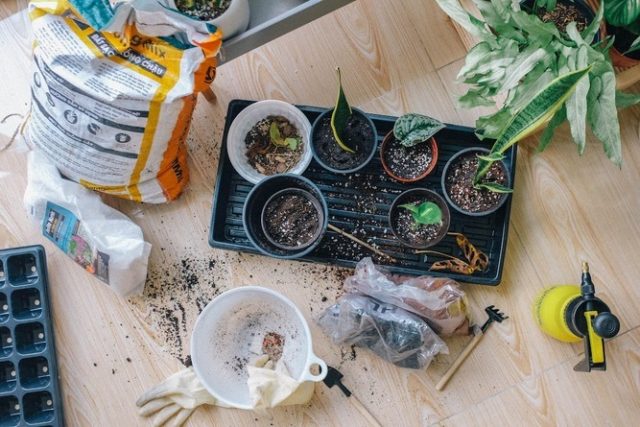Gardening is best done during the monsoon season because there is a lot of rain. You can make sure that your garden thrives throughout this rainy season with a little planning and attention. Here are some pointers and strategies for making a successful monsoon garden.
- Soil Preparation: Prepare your soil by adding organic matter, such as compost or well-rotted manure, before the monsoon season starts. This enhances the fertility, drainage, and soil structure. The soil can be improved to hold moisture without being flooded.
- Proper Drainage: During periods of intense rainfall, good drainage is essential. By amending the soil with gravel or sand, adding a slope, or putting in drainage channels, you may make sure your garden has proper drainage. This helps keep your plant’s roots from rotting and prevents waterlogging.
- Mulching: While mulching is advantageous year-round, the monsoon season is when it is most crucial. Apply a thick layer of organic mulch around your plants, such as straw, wood chips, or dehydrated leaves. Mulch helps prevent soil erosion brought on by heavy rainfall, manage weeds, and store moisture.
- Rainwater Harvesting: Installing a rainwater harvesting system will help you make the most of the plentiful rainfall. You may water your plants when it’s dry or the rain stops by collecting rainwater in barrels or tanks. Additionally, it helps to save this priceless resource and lowers water bills.
- Plant Selection: Select vegetation that does well during the monsoon season. Look for cultivars that can withstand too much rain, such as ferns, tropical plants, and some herbs like mint and basil. Native plants often need less upkeep and are well-suited to the local climate.
- Pruning and upkeep: During the monsoon season, routine pruning and care are essential. Trim any overgrown branches and get rid of any unhealthy or dead plant material. This encourages healthy growth, enhances air circulation, and lowers the danger of fungi illnesses.
- Control of Pests and Diseases: Pests and diseases frequently rise during the rainy season. Keep an eye out for illness or pest indications in your garden. Protect your plants from pests by using natural pest management strategies like neem oil or insecticidal soaps. Eliminate any diseased plants to stop the spread of illness.
- Staking and Support: Plants can bend or break in the strong winds that come with monsoon rainfall. Stake your plants or use cages, trellises, or both to support them. This guarantees their stability and guards against wind-related damage.
- Watering: Even if the monsoon delivers rain, it’s still necessary to keep an eye on your garden’s moisture levels. Regularly check the soil and only water when necessary. Based on the amount of rain that fell, alter the frequency and length of watering. Overwatering should be avoided as it might cause root rot and other issues.
- Garden Cleanliness: Maintain your garden’s cleanliness during the monsoon season. Remove fallen leaves and other debris that may be home to bugs or encourage the spread of fungi. To keep your plants healthy and prevent weed competition, regularly weed your garden.
Conclusion
In conclusion, you can construct a flourishing monsoon garden that makes the most of the rainy season with the appropriate planning and upkeep. You may maintain the health and vitality of your garden at this time by following the tips above. Enjoy the plentiful rain and let it nurture your plants as you build a stunning garden that will give you joy all through the monsoon season. Enjoy your garden!






































